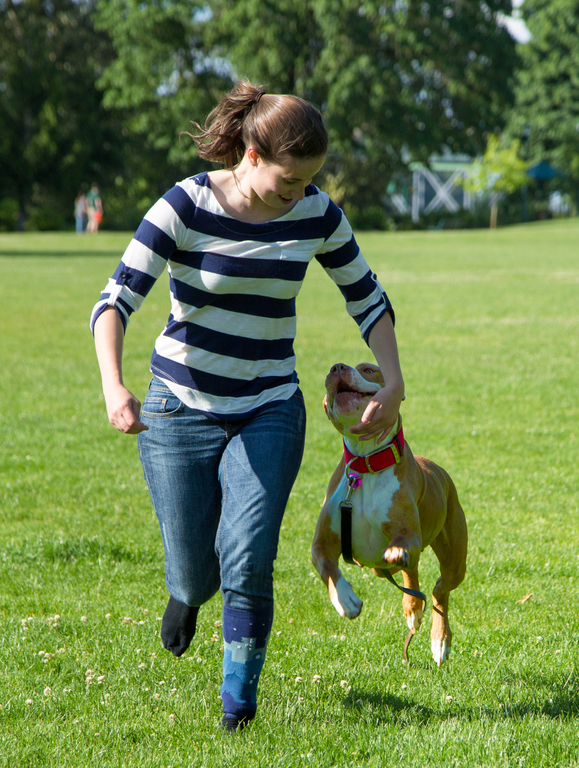Arthritis in dogs is a pervasive concern that demands careful attention from pet owners and veterinary professionals. As our canine companions age, the subtle signs of this condition can often go unnoticed or dismissed as typical aging changes.
However, being attuned to the early indicators of arthritis is paramount in ensuring prompt intervention and effective management. By understanding these tell-tale signs and taking proactive steps towards identification and treatment, pet owners can significantly impact their furry friends' comfort and mobility.
Stay tuned to uncover the key signs that may indicate arthritis in dogs and how to navigate this challenging yet manageable condition.
Key Takeaways
- Watch for signs like limping, stiffness, and reluctance to play.
- Use diagnostic tools like X-rays to confirm arthritis.
- Manage arthritis with pain control, weight management, and exercise.
- Consider surgical options and home adaptations for improved quality of life.
Canine Arthritis Overview
Canine arthritis, a common degenerative joint condition in dogs, affects approximately 25% of the canine population, with larger breeds being more predisposed to this ailment. The condition involves the deterioration of joint cartilage, fluid accumulation, and the formation of new bone.
Causes of canine arthritis include injury, infection, immune system problems, obesity, poor nutrition, and joint abnormalities. It can affect dogs of all ages and tends to worsen over time if left untreated.
Recognizing the signs of arthritis in dogs is crucial for prompt intervention and management. By understanding the prevalence and factors contributing to canine arthritis, pet owners can take proactive steps to monitor their dog's joint health and seek appropriate veterinary care when needed.
Recognizing Arthritis Signs
Detection of arthritis symptoms in dogs is crucial for early intervention and effective management. Signs of arthritis in dogs can manifest in various ways, such as limping after exercise, reluctance to walk long distances, and stiffness. Additionally, dogs may exhibit difficulty in activities like getting up, jumping, or using stairs, along with increased irritability.
It is essential to note that dogs may not always overtly display pain, underscoring the importance of keenly observing any behavioral changes at home. Recognizing these subtle signs early on can prompt timely veterinary assessment and the initiation of appropriate treatment measures to alleviate discomfort and enhance the quality of life for dogs suffering from arthritis.
Diagnosing Arthritis in Dogs

Identifying arthritis in dogs involves a comprehensive diagnostic process that encompasses physical examinations, imaging techniques, and monitoring responses to pain management strategies. To diagnose arthritis in dogs effectively, veterinarians may employ a variety of methods, including:
- Thorough physical examinations to assess joint movement and tenderness.
- X-rays to visualize changes in bone structure and joint alignment.
- Blood tests to rule out other potential causes of symptoms.
- Joint fluid analysis to check for inflammation and infection.
- Monitoring responses to pain management strategies to determine the most effective treatment plan.
Screening for Dog Arthritis
Implementing effective screening methods for arthritis in dogs is crucial for early detection and timely intervention. Screening tools like checklists and video recordings can aid in identifying potential cases of osteoarthritis in dogs. Regularly updating these screening methods is essential to catch the condition early and initiate appropriate management strategies. Below is a table highlighting key screening methods for dog arthritis:
| Screening Method | Description | Benefits |
|---|---|---|
| Online Checklist | Free checklist provided by Zoetis detailing signs and behavioral changes | Easy to access and use for initial screening |
| Video Recordings | Recording dog movements to assist in diagnosis | Provides visual evidence of mobility issues |
| Diagnostic Tools (X-rays, MRI, CT scans) | Advanced tools for confirming arthritis diagnosis | Offers detailed insights into joint health |
Managing Arthritis in Dogs

Effective management of arthritis in dogs involves a comprehensive approach that focuses on improving comfort, slowing disease progression, and enhancing overall quality of life for the affected canine companions. To achieve this goal, consider the following strategies:
- Implement a tailored exercise routine to maintain joint health and mobility.
- Ensure proper weight management to reduce joint pressure and inflammation.
- Utilize pain control methods such as NSAIDs or alternative therapies.
- Provide a comfortable environment with warm bedding and non-skid surfaces.
- Regular veterinary check-ups and adjustments to the treatment plan can help monitor the condition and make necessary adaptations.
Treating Osteoarthritis in Dogs
When addressing osteoarthritis in dogs, a multifaceted treatment approach is essential to enhance comfort and slow disease progression. Treatment options for osteoarthritis in dogs typically include pain management, weight control, exercise, and alternative therapies. Here is a breakdown of key components in managing this condition:
| Treatment Approach | Description | Benefits |
|---|---|---|
| Pain Management | Involves NSAIDs or alternative therapies | Reduces discomfort |
| Weight Control | Helps reduce joint pressure and inflammation | Improves mobility |
| Exercise | Regular low-impact exercise | Maintains joint health |
| Alternative Therapies | Such as acupuncture or physical therapy | Complements traditional treatments |
Surgical Interventions for Arthritis

Surgical interventions play a crucial role in managing advanced cases of arthritis in dogs, offering enhanced joint function and relief from pain. While surgery is typically reserved for severe situations, it can greatly improve a dog's quality of life. Some common surgical interventions for arthritis in dogs include:
- Total hip replacement
- Knee ligament stabilization procedures
- Arthroscopic joint surgery
- Joint fusion
- Cartilage grafting
These procedures aim to reduce pain, restore mobility, and slow down the progression of arthritis in affected joints. It is essential to consult with a veterinarian to determine the most suitable surgical option based on the individual dog's condition and needs.
Home Care for Arthritic Dogs
To ensure the well-being and comfort of arthritic dogs, implementing appropriate home care measures is essential in managing their condition effectively. Providing a comfortable and supportive environment is crucial. This includes offering warm and soft bedding to help alleviate joint pain and stiffness.
Additionally, consider using ramps or stairs to assist dogs in accessing elevated areas without putting excess strain on their joints. Raised food bowls can also aid in reducing neck and back strain during meal times. Non-skid surfaces throughout the house can prevent slips and falls, minimizing the risk of further injury to arthritic joints.
Regular grooming sessions and gentle massages can also help improve circulation and flexibility in arthritic dogs.
Conclusion
In conclusion, early recognition and proactive management of arthritis in dogs are essential for improving their quality of life.
By understanding the signs and symptoms, utilizing appropriate diagnostic tools, and implementing various treatment options, pet owners can help alleviate their furry companions' discomfort and promote optimal joint health.
With a combination of veterinary care, surgical interventions, and supportive home practices, arthritis in dogs can be effectively managed to ensure they lead comfortable and active lives.




